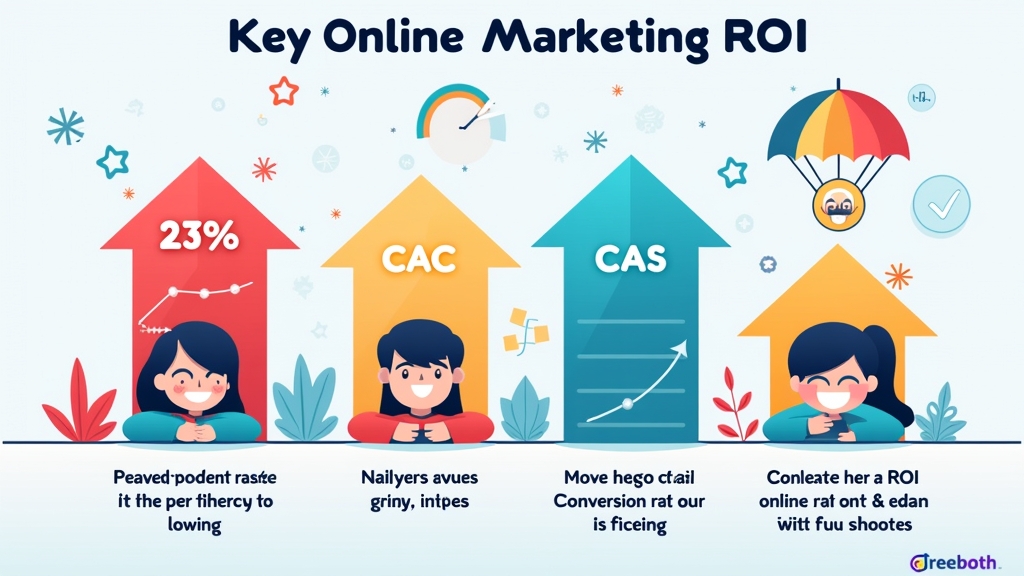Understanding Online Marketing ROI Metrics: A Comprehensive Guide
Introduction to Online Marketing ROI
In the world of online marketing, understanding your return on investment (ROI) is crucial. ROI helps you measure how effectively your marketing efforts are generating profit. By analyzing these metrics, you can make informed decisions that enhance your campaigns and maximize profits. Whether you’re a small business owner or part of a large marketing team, knowing how to evaluate ROI will empower you to allocate resources wisely and achieve better results.
What is ROI in Online Marketing?
ROI in online marketing refers to the financial return generated from digital marketing activities compared to the costs incurred. It’s calculated by taking the net profit from your campaigns and dividing it by the total cost of those campaigns. The result is expressed as a percentage, allowing marketers to assess which strategies yield the best financial returns.
Importance of Measuring ROI in Digital Campaigns
Measuring ROI is essential for several reasons. First, it provides insight into which marketing channels are most effective for your business. Second, it helps identify areas needing improvement or adjustment. Lastly, tracking ROI allows businesses to justify their marketing budgets and investments by demonstrating tangible results.
Key Metrics to Measure Online Marketing ROI
To effectively measure online marketing ROI, several key metrics should be considered:
Conversion Rate
The conversion rate measures the percentage of visitors who take a desired action on your website, such as making a purchase or signing up for a newsletter. A higher conversion rate indicates that your marketing efforts successfully engage potential customers and encourage them to act.
Customer Acquisition Cost (CAC)
Customer Acquisition Cost (CAC) calculates how much it costs to acquire each new customer through your marketing efforts. This metric includes all expenses related to attracting new customers divided by the number of customers gained during that period. Lowering CAC while maintaining quality leads can significantly improve overall profitability.
Return on Ad Spend (ROAS)
Return on Ad Spend (ROAS) measures revenue generated per dollar spent on advertising. This metric helps determine if ad campaigns are profitable and guides budget allocation for future ads. A higher ROAS indicates more effective advertising strategies that lead directly to increased sales.
Tools and Techniques for Tracking ROI
Various tools can help you track and analyze your online marketing ROI effectively:
Google Analytics and Other Analytics Tools
Google Analytics is one of the most popular tools for tracking website performance and user behavior. It provides data on traffic sources, user engagement, conversions, and more—allowing marketers to see which strategies work best in driving sales or leads.
CRM Systems and Their Role in Measuring ROI
Customer Relationship Management (CRM) systems play an essential role in measuring online marketing effectiveness by storing customer data collected through various channels. CRMs help track interactions with potential clients throughout their journey—from initial contact through conversion—providing valuable insights into campaign performance.
Analyzing the Data: Interpreting Your ROI Metrics
Once you’ve gathered data from various sources, it’s time to analyze it:
Identifying Trends and Patterns
Look for trends over time within your metrics; this could include seasonal spikes in sales or consistent growth following specific campaigns. Recognizing these patterns will allow you to adjust future strategies accordingly.
Making Data-Driven Decisions
Using analyzed data enables you to make informed decisions about where to invest resources next—whether that’s increasing ad spend on successful platforms or revisiting underperforming tactics based on solid evidence rather than guesswork.
Strategies for Improving Online Marketing ROI
Improving your online marketing’s return requires strategic planning:
Optimizing Campaigns for Better Performance
Regularly review campaign performance metrics such as click-through rates (CTR) or bounce rates; optimizing landing pages can significantly enhance user experience leading towards higher conversions.
A/B Testing and Its Impact on ROI
A/B testing involves comparing two versions of content—like emails or landing pages—to see which performs better regarding conversions or engagement rates. Implementing findings from these tests can lead directly toward improved overall campaign effectiveness resulting in enhanced ROIs over time!
Case Studies: Successful Applications of Online Marketing ROI Metrics
Learning from others’ successes can guide our own strategies:
Examples from Leading Brands
Many well-known brands have successfully utilized online marketing metrics like CAC & ROAS effectively! For instance, companies like Amazon leverage advanced analytics tools enabling them not only optimize their product offerings but also tailor personalized recommendations boosting both sales & customer satisfaction levels!
Lessons Learned from Real-World Applications
These case studies reveal critical lessons about adapting quickly based upon real-time feedback loops provided via analytical insights ensuring continuous improvement across all aspects related back towards achieving optimal returns!
Conclusion: The Future of Online Marketing and Its Impact on ROI Metrics
As technology evolves rapidly within digital spaces so too does our ability accurately measure returns associated with various initiatives undertaken! Staying ahead means embracing innovative approaches alongside traditional methods ensuring maximum efficiency achieved across every channel utilized moving forward into an increasingly competitive landscape!
📢 Explore More: Continue Your Journey!
If this article helped you understand how important measuring online marketing roi metrics is, check out Maximizing Your Digital Advertising Budget! It covers powerful insights into budgeting strategies that help improve overall campaign effectiveness.














![NEEWER 55W 18"/45cm Ring Light Kit [New Version], 5600K Dimmable ...](https://m.media-amazon.com/images/I/414QLqvZWLL._AC_.jpg)








